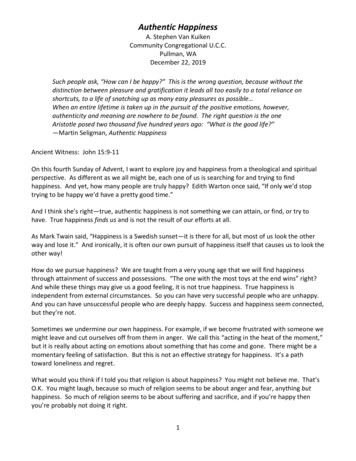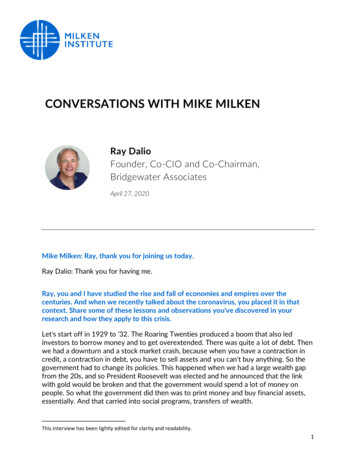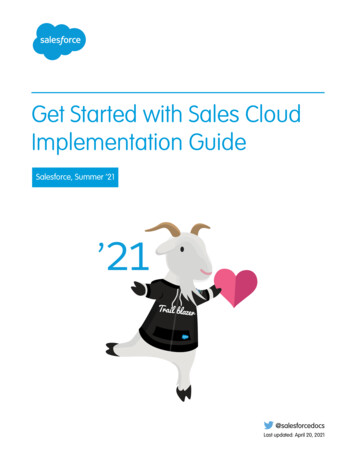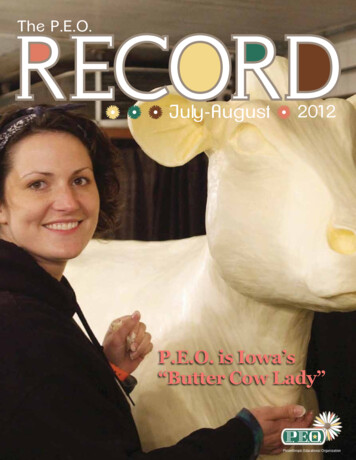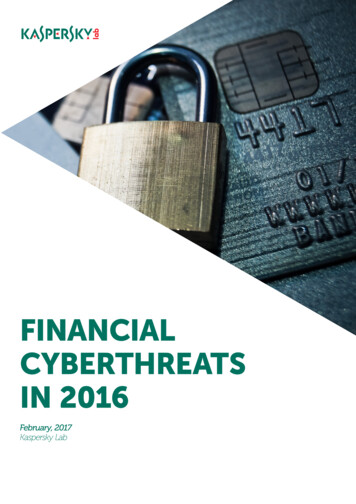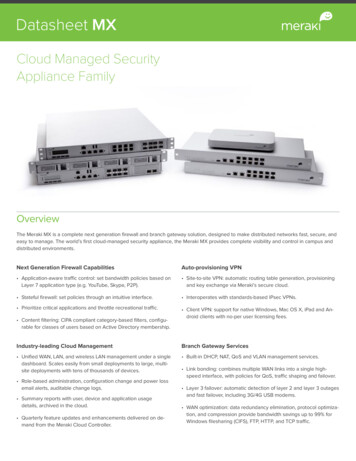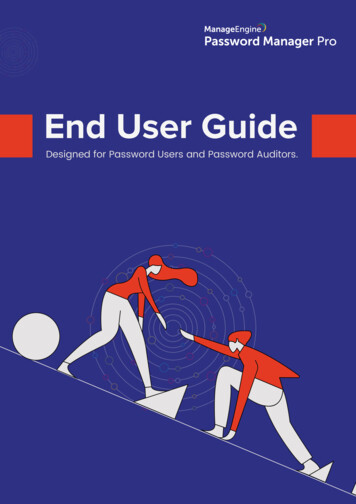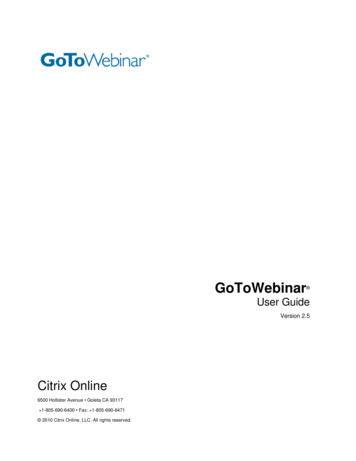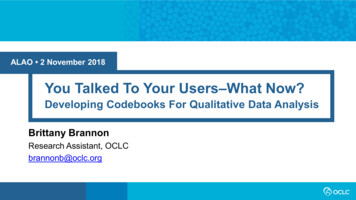
Transcription
ALAO 2 November 2018You Talked To Your Users–What Now?Developing Codebooks For Qualitative Data AnalysisBrittany BrannonResearch Assistant, OCLCbrannonb@oclc.org
WHAT IS CODING?
“The goal of coding isultimately data reduction ”(Connaway & Radford, 2017, p. 299)Connaway, L. S., & Radford, M. L. (2017). Research methods in libraryand information science (6th ed.). Santa Barbara, CA: Libraries Unlimited.
Codebook1. Namea. Scientific nameb. Common name2. Native locationa. North Americab. South Americac. Europed. Asiae. Australiaf. Africag. Antarctica3. Habitata. Trees and/or woodb. Grasses and/or straw4. Growtha. Wildb. Cultivated5. Human usea. Edibleb. Toxici. Deadlyc. Psychoactived. Medicinal
“Amanita phalloides.” (2018, October 11).Wikipedia, The Free Encyclopedia.https://en.wikipedia.org/wiki/Amanita phalloides1a3a1b2c5bi
“Hygrophoropsis aurantiaca.” (2018, March23). Wikipedia, The Free oropsis aurantiaca1a1b3a25a, 5b
Considerations in Coding andCodebook Development Research questions/Purpose of researchType of dataAnticipated analysisLiterature/Theoretical frameworkSize of research team
Researching Students’Information Choices (RSIC):Determining Identity and JudgingCredibility in Digital fl.edu/RSIC
DEVELOPING A CODEBOOK
Approaches to Coding Deductive Use of established coding schemes Inductive Coding schemes emerge from data
Generating Codes1. Review a sample of your data2. Identify patterns and themes3. Compare different pieces of data toone another4. Determine most important themes
1. Sample sizes IMLS grant project – 10% of data (180 transcripts, wereviewed 18) Discovery project – 100% of data (15 transcripts) Assessment project – 100% of data (several openended text responses)
Generating Codes1. Review a sample of your data2. Identify patterns and themes3. Compare different pieces of data toone another4. Determine most important themes
Generating Codes1. Review a sample of your data2. Identify patterns and themes3. Compare different pieces of data toone another4. Determine most important themes
3. Are these the same concept? “This is kind of like a counterargument of what I would say. Soit's going to have both sides.” (U23 45:04) “So this is interesting because the title is actually suggestingthat it is going to take a different viewpoint” (H20 25:48) “I don't like Wikipedia because other people can give youdifferent information and their opinion, so I don't useWikipedia.” (E14 04:07) “TIME Magazine I'll just put somewhat credible because I'msure there's some kind of bias involved in the magazinesetting.” (G01 48:16)
Generating Codes1. Review a sample of your data2. Identify patterns and themes3. Compare different pieces of data toone another4. Determine most important themes
4. Which codes are important? RepetitionResearch questionsAnticipated analysisLiterature
Developing the Codebook5. Compare themes to one another6. Organize themes into a hierarchy(preliminary codebook!)7. Code a different sample using thepreliminary hierarchy8. Revise!
Developing the Codebook5. Compare themes to one another6. Organize themes into a hierarchy(preliminary codebook!)7. Code a different sample using thepreliminary hierarchy8. Revise!
Developing the Codebook5. Compare themes to one another6. Organize themes into a hierarchy(preliminary codebook!)7. Code a different sample using thepreliminary hierarchy8. Revise!
Developing the Codebook5. Compare themes to one another6. Organize themes into a hierarchy(preliminary codebook!)7. Code a different sample using thepreliminary hierarchy8. Revise!
ACTIVITY
1. Read through G11 and identify themes. (10 minutes)2. Find a group and compare. Do some themes seem more important thanothers? Do some themes represent similar concepts? Do some themes have logical relationships withother themes?
ADDITIONAL CONSIDERATIONS
Unit of Analysis Turn of conversationWordLineSegmentIncident
Application of CodesLiteralThematicImplied
Coding Tools Specialty software NVivo Qualtrics Spreadsheet software Survey software No software!
Questions?Brittany Brannonbrannonb@oclc.org
Wikipedia, The Free Encyclopedia. https://en.wikipedia.org/wiki/Amanita_phalloides 1a
